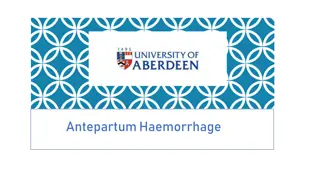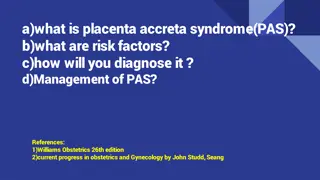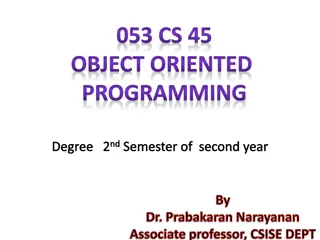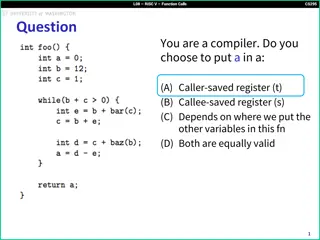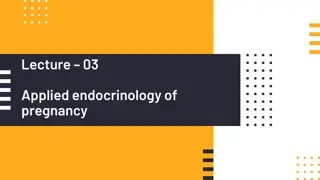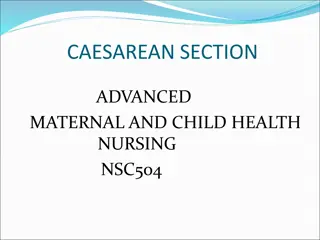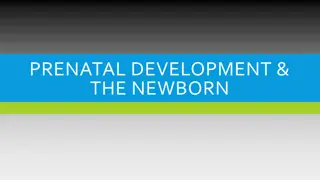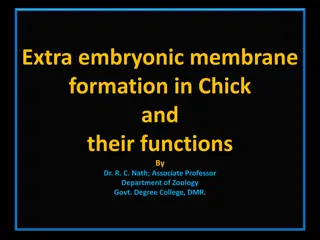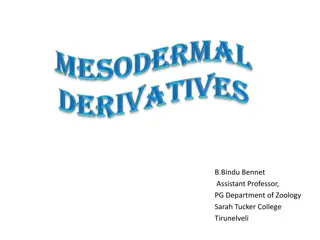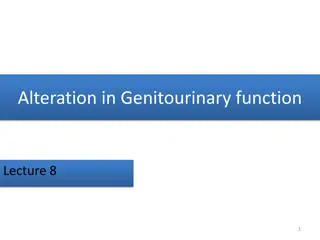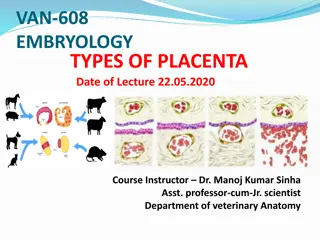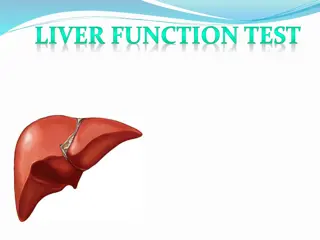Understanding the Placenta: Structure and Function
The placenta is a crucial organ in pregnancy, facilitating the exchange of gases and nutrients between mother and fetus. Learn about its formation, components, surfaces, and functions in this comprehensive overview.
Download Presentation

Please find below an Image/Link to download the presentation.
The content on the website is provided AS IS for your information and personal use only. It may not be sold, licensed, or shared on other websites without obtaining consent from the author. Download presentation by click this link. If you encounter any issues during the download, it is possible that the publisher has removed the file from their server.
E N D
Presentation Transcript
Placenta Placenta Reproductive block-Embryology-Lecture 4 Editing file
Color guide Color guide: : Only in boys slides in Green Only in girls slides in Purple important in Red Red Notes in Grey Grey Green Purple Objectives Objectives At the end of the lecture, students should be able to: Identify nothing because there is no objectives in the Dr s lectures There is also nothing here but we want to fill the space It is worth noting that, this lecture was done while coronavirus pandemic I would like to thank the batch and academic leaders for their hard working in these two years Free space for adding any things
Placenta Placenta Introduction Introduction It is a fetomaternal structure. Formed by the beginning of the 4th month. and by the end of the 4th month a complete vascular network in placenta is established (after degenerate of corpus luteum) It is the primary site for exchange of gases and nutrients between mother and fetus Full term placenta shows: Discoid in shape, Weighs 2 - 3 cm. Umbilical cord is attached to the center. It has two surfaces: Fetal & Maternal. Fate of placenta : Fate of placenta : Within 15 minutes after birth of the infant, the strong uterine contractions that continue after birth compress uterine blood vessels to limit bleeding & cause the placenta to detach from the uterine wall. Weighs ,g) 600 500 ( Diameter Diameter 25 - 15 cm, Thickness Thickness Formation Formation Maternal Part Maternal Part Fetal Part Fetal Part Decidua Basali (part of the decidua deep to the conceptus.) By the end of 4th month, the decidua basalis is replaced by the fetal component of the placenta. Decidua (Gravid Endometrium): It is the functional layer of the endometrium during pregnancy which is shed after parturition. Villous Chorion. It is the bushy area at the embryonic pole. Its villi are more in number, enlarged and branch profusely. 3 3
Placenta cont Placenta cont . . Placental externally Placental externally Surfaces Surfaces Fetal Surface Fetal Surface Maternal Surface Maternal Surface Smooth because it is covered with the amnion. Developed from chorionic sac. The umbilical cord is attached to its center. The chorionic vessels are radiating from the umbilical cord. Rough. Derived from endometrium. Formed of ( saera xevnoc ralugerri ) sevoorg yb detarapes era hcihw )snodelytoC( )atpes latnecalp( . Each cotyledon is covered by a thin layer of decidua basalis. 20 15 Placental internally Placental internally It consists of two or more stem villi with their many branch villi. It receives ( 80 - 100 ) maternal spiral arteries that enter the intervillous spaces at regular intervals. Structure of a Structure of a Cotyledon Cotyledon Large blood filled spaces which are freely communicating. They receive spiral arteries from the lacunae in the syncytiotrophoblast. The spaces are drained through endometrial veins. Both arteries and veins pass through pores in the cytotrophoblastic shell. Intervillous Intervillous Space Space Cotyledon 4 4
Placental circulation Placental circulation Fetal placental circulation Fetal placental circulation 1. spiral endometrial arteries discharge into the intervillous space. 2. The blood is propelled in jet like fountains by the maternal blood pressure. Now the pressure of this entering blood is higher than that in the intervillous space . It forms a roof of the space. 1. As the pressure dissipates, the blood flows slowly around the branch villi . Exchange of metabolites and gases with the fetal blood. 1. As the pressure decreases, the blood flows back from the chorionic plate and enter the endometrial veins to the maternal circulation. 100 80 Two Umbilical Arteries Two Umbilical Arteries: : Carry poorly oxygenated blood from the fetus to the placenta. Within the branch chorionic villi, they form: Arterio Arterio- -capillary venous network capillary venous network: : It brings the fetal blood extremely close to the maternal blood. The well oxygenated fetal blood in the capillaries passes into veins accompanying the chorionic arteries. At the umbilical cord, they form the One Umbilical Vein One Umbilical Vein. . Maternal placental circulation Maternal placental circulation 5 5
Placental Membrane Placental Membrane It is a composite thin membrane of extra fetal tissues which separates the fetal and maternal bloods. Upto( Upto( skeew ) skeew ) 20 20 At full term At full term it is composed of four layers: it becomes thinner and composed of three layers only : 1 1 Syncytiotrophoblast Syncytiotrophoblast 2 2 Cytotrophoblast. Connective tissue of the villus 3 3 Connective tissue of the villus Endothelium of fetal capillaries 4 Endothelium of fetal capillaries At some sites, the syncytio comes in direct contact with the endothelium of the capillaries and forms Vasculo syncytial placental membrane. 6 6
Functions of placenta Functions of placenta Has there main function Has there main function . . Endocrine Endocrine 3 3 Synthesis Synthesis: : 1 1 . . Metabolic Metabolic . . Transportation of Transportation of: : 2 2 Synthesis of : Glycogen Cholesterol Fatty Acids which supply the fetus with nutrients and energy. ) ) Progesterone: Progesterone:Maintains ( ( 1 1 pregnancy if the corpus luteum is not functioning well A) Gases A) Gases: : Exchange of O simple diffusion. The fetus extracts ( doolb lanretam eht morf etunim/ B) Drugs and Drug metabolites B) Drugs and Drug metabolites: : They cross placenta by simple diffusion. They can affect the fetus directly or indirectly by interfering with placental metabolism. 2 OC , 2 and CO is through fo lm ) 30 20 ) ) Estrogen: Estrogen: Stimulates uterine ( ( 2 2 growth and development of the mammary glands. 2 O D) Hormones: D) Hormones: Protein hormones do not reach the embryo in sufficient amounts. some of these hormones (Thyroxine & Testosterone which may cause masculinization of a female fetus) can cross the placental membrane . C) Maternal Antibodies: C) Maternal Antibodies: Maternal immunoglobulin G gives the fetus passive immunity to some infectious diseases (measles, small box) and not to others (chicken box.) ( ( 3 3 ) ) somatotropin (HCS) or Hpl: somatotropin (HCS) or Hpl: A eht sevig taht enomroh htworg lanretam no ytiroirp eht sutef tsaerb setomorp tI .esoculg doolb noitcudorp klim rof tnempoleved Human chorionic Human chorionic F) Nutrients and Electrolytes: F) Nutrients and Electrolytes: Water, Amino acids, Carbohydrates, Vitamins and Free Fatty Acids are rapidly transferred to the fetus. ( ( 4 4 ) ) gonadotropin (HCG) : gonadotropin (HCG) : Maintains the corpus luteum and used as indicator of pregnancy . Human chorionic Human chorionic E) Waste products: E) Waste products: ssap dica ciru dna aerU elpmis yb enarbmem latnecalp eht hguorht noisuffid . 7 7
Anomalies Of Placenta Anomalies Of Placenta Abnormal absence of chorionic villi with partial or complete absence of the decidua basalis. Placenta Placenta Accreta Accreta Chorionic villi penetrate the myometrium to the perimetrium. The most common presenting sign of these two anomalies is trimester bleeding. Placenta Placenta Percreta Percreta The blastocyst is implanted close to or overlying the internal uterine os. It is associated with late pregnancy bleeding. Delivery is through Cesarean section. Effect Of Maternal Drugs On Fetus Effect Of Maternal Drugs On Fetus Placenta Placenta Previa Previa Fetal drug addiction can be due to some drugs as Heroin. All sedatives and analgesics can affect the fetus to some degree. Drugs used for management of labor can cause respiratory distress to the newborn 8 8
QUIZ QUIZ Q1 Q2 Q3 Q4 Q5 Q6 Q7 Q8 C C B A B D B B Q Q A. syncytiotrophoblast B. Endothelium of fetal capillaries C. Cytotrophoblasts D. Connective tissue of the villi Q Q gnideelb ycnangerp etal htiw detaicossa si seilamonA gniwollof eht fo hcihW A. Placenta Accreta B. Placenta Percreta C. Placenta Previa D. Placenta increta Q Q 3 3 : : fetal surface of placenta Derived from A. endometrium B. chorionic sac C. Yolk sac D. Connective tissue of the villus Q Q 4 4 : : placenta can synthesis .. A. Glycogen B. Collagen C. amino acid D. protein atnecalp mret lluf ni sraeppasid yltsom sreyal gniwollof eht fo hcihW 1 1 : : Q Q 5 5 : : which of these hormone Maintains the corpus luteum A. hCS B. hCG C.Progesterone D. Estrogen Q Q 6 6 : : The most common presenting sign of Placenta Percreta A. anal bleeding B. pain in the abdomen C. blood in urine D. trimester bleeding Q Q 7 7 : : the Umbilical Arteries carry A. deoxygenated blood B. poorly oxygenated blood C. highly oxygenated blood D. mixed blood Q Q 8 8 : : Each Cotyledon contains A. one or more stem vill B. two or more stem vill C. only two stem vill D. at least three stem vill 2 2 : : .. 9 9
Members board Members board Team leaders Team leaders Abdulrahman Shadid Abdulrahman Shadid Ateen Almutairi Ateen Almutairi Boys team Boys team : : Girls team Girls team: : Mohammed Al Mohammed Al- -huqbani Salman Alagla Salman Alagla Ziyad Al Ziyad Al- -jofan jofan Ali Aldawood Ali Aldawood Khalid Nagshabandi Khalid Nagshabandi Sameh nuser Sameh nuser Abdullah Basamh Abdullah Basamh Alwaleed Alsaleh Alwaleed Alsaleh Mohaned Makkawi Mohaned Makkawi Abdullah Alghamdi Abdullah Alghamdi huqbani Ajeed Al Rashoud Ajeed Al Rashoud Taif Alotaibi Taif Alotaibi Noura Al Turki Noura Al Turki Amirah Al Amirah Al- -Zahrani Alhanouf Al Alhanouf Al- -haluli Sara Al Sara Al- -Abdulkarem Abdulkarem Renad Al Haqbani Renad Al Haqbani Nouf Al Humaidhi Nouf Al Humaidhi Jude Al Khalifah Jude Al Khalifah Nouf Al Hussaini Nouf Al Hussaini Danah Al Halees Danah Al Halees Rema Al Mutawa Rema Al Mutawa Maha Al Nahdi Maha Al Nahdi Razan Al zohaifi Razan Al zohaifi Ghalia Alnufaei Ghalia Alnufaei Zahrani haluli


